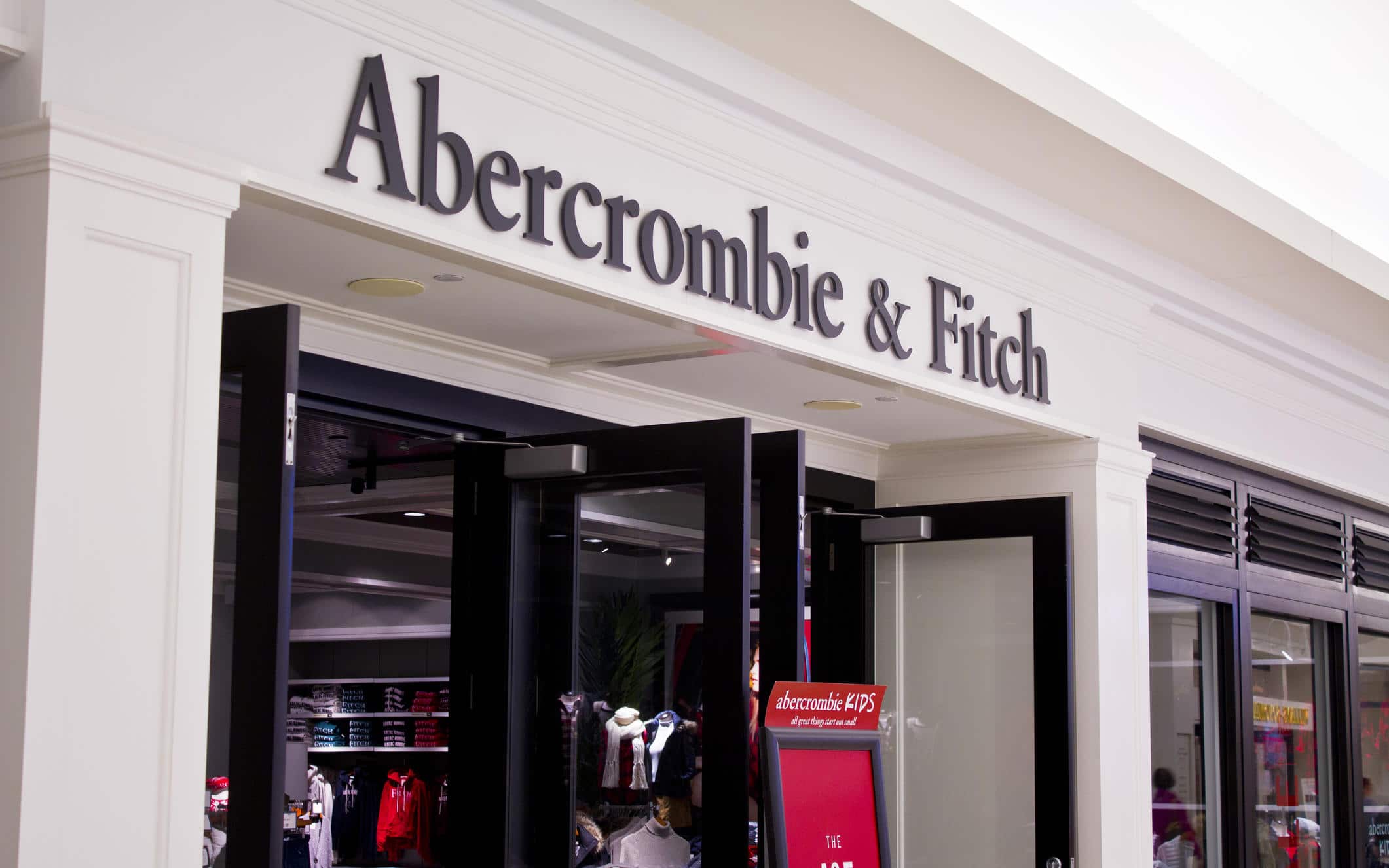Sensory branding strategies to seduce your customer’s senses

Sometimes, it’s easy to simplify the complexity of the term “brand” into something simple, like a visual appearance, logo or a tone of voice.
However, the more you learn about the art of branding, the more you’ll see that a brand is more than just a handful of visual and written assets. Your brand is an entire sensory experience, designed to evoke emotion and create connections.
Research shows that the decisions we make about which products to buy and which companies to trust are driven by subconscious, instinctive and emotional factors. We decide which organisations deserve our commitment based not just on what we see and read about them. After all, we’re used to seeing brand logos and advertisements all around us, but in an era of ocular overload, it’s not just what we see that influences us.
Sensory branding is about connecting with your customer on more than just a visual level.
By engaging all of the available sensory branding channels, companies can stimulate multiple senses at once, helping their customers to “experience” their identity more profoundly and memorable.
Let’s make sense of sensory branding.

What is sensory branding? More than meets the eye…
All companies crave brand awareness.
To succeed in a crowded business environment, businesses need a way to capture the attention of potential customers. Importantly, this doesn’t just mean choosing the right advertising campaigns. Building sustainable relationships with a customer is all about making them fall in love with your brand.
Brands are emotional concepts rooted in human perception, emotion, beliefs, and attitudes. As more corporations appear, competing for the attention of certain customers, it can be challenging to make the right impression. By defining sensory branding for your company, you can create an experience that goes beyond your product or services.
So, what is sensory branding?
The simple answer is that its branding that goes beyond the logo, business name, or words on a piece of paper.
For instance, luxury hotels have been using “signature scents” as part of their branding campaign for decades. Many retailers also take a similar approach, using scent to engage the limbic system of the brain – the part most connected to memory and behavior.
A study conducted by Nike found that when the iconic business added scents to its stores, purchase intent among customers increased by up to 80%. In a similar report, a petrol station mini-mart found that by adding the smell of coffee to the spaces around its gas stations, it improved coffee sales by 300%.
Brands using sensory branding know that if they want to build lasting connections with their audience, they need to strategically manage their sensory messaging as much as their visual or verbal appeal. This means thinking beyond the impact that your logo or website design will have on your audience and considering how you can create new touch-points through other senses.
Every smell, taste, and touch that reminds a customer of your business is another opportunity to build brand affinity. The more you spread the effect of your brand identity over multiple senses, the easier it is to create stronger connections by speaking to the entire brain.

Sensory branding channels to guide your strategy
We’re living in an age where customers are driven by experience, not just product features. This means that today’s brands need to create as many opportunities for engagement as possible. Now that 2 in 5 customers say that they feel “overwhelmed” by the volume of the messages they receive from companies, it’s time for organizations to be smarter about the way they cut through the noise.
Sensory branding gives businesses a way to create memorable and engaging experiences with their customers, without being overwhelming.
Ready to discover the pros and cons of sensory branding for yourself? You’ll need to become familiar with these key channels first.
Sight
It’s easy to assume that sight would be the easiest of the sensory branding channels to perfect. After all, there are so many visual assets associated with a brand, from its logo to its website design and even leaflets or brochures. However, sight can be one of the most challenging things to address in the modern age, particularly when you’re competing with the stimulus and screens of a crowded world.
One of the best ways to optimize your sight-based sensory branding strategy is to create a story in what your customer sees. For instance, when you’re creating your logo, don’t just think about which colors you need to use, or how you can make your icon responsive on a range of screens. Consider how certain shades spark your customer’s emotions, and what the shapes you choose will say about your business in the long-term.
Smell
Though often-overlooked, smell is one of the most influential senses for any company to use in their branding strategy. Your sense of smell is directly linked to your limbic system. This means that you’re far more likely to remember something you smell over something you see. A New York Times report showed that 81% of consumers would choose products they can smell over products they can see.
There are plenty of examples of sensory branding that use smell in a range of industries. For instance, you’ve probably smelt the custom scents in hotel lobbies before. Disney World is particularly well-known for its method of pumping certain smells into its theme parks to encourage buyer behavior.
Sound
When the visual world is too noisy to cut through, one of the best ways to amplify your brand is with sound. “Audio branding” is a crucial subsection of the sensory branding world. For years, brand managers and marketing experts have used sound to help them capture the attention of their audience. Just think of Apple’s successful sound effects, or the McDonald’s “I’m Lovin’ It” jingle.
Auditory logos and specific sounds are easy ways for companies to get involved with successful examples of sensory branding. Even companies like Harley Davidson understand that the signature growl of their V-twin engine is part of what makes their bikes so appealing.
Touch
Your skin is an incredible thing. It’s made up of thousands of sensory receptors that alter how you respond to certain stimuli. Brands can use various materials, and even different shapes to give their customers a completely different experience with each engagement. Companies like Dove use soft feminine curves on their deodorant cans, to remind customers that they’re handling a feminine product.
Sometimes, the weight and texture of a product can even help us to separate high-quality items from those that are explicitly designed to be cost-effective. Think about the difference between a branded shampoo bottle, and one produced under your supermarket’s own label.
Taste
Taste is a difficult sense for companies to engage with when they’re looking for sensory branding examples. In the food and beverage industries, taste is a natural way to engage with customers. However, it’s possible to add “taste” to your brand identity regardless of your vertical – so long as you’re willing to get a little creative.
For instance, a free giveaway at your office company that involves a gift basket of muffins to your favorite clients helps them to associate you with something sweet and satisfying. Even a bowl of candies available on your front desk when people visit your reception is enough to change the way that people perceive you.
Just remember, sensory branding isn’t about overstimulating your audience. Just like any other part of creating a brand experience strategy, it’s all about giving your customers the perfect insight into what your business stands out. Look for ways to engage your audience, without flooding their senses.

How does sensory branding help businesses?
Now that you know the different channels involved in sensory branding, you may be wondering how this technique can help your company to grow. Investing in any brand campaign requires a lot of time, focus and even money. With that in mind, it only makes sense to engage with the latest sensory branding trends, if you know that they’re going to deliver a positive ROI.
The act of adding senses to your branding techniques involves curating powerful connections to your product or company by engaging the senses of your prospective customers. As today’s clients begin to seek out organizations that can help them to go beyond the mundane, more companies are relying on sensory branding to help them stand out.
So, how does sensory branding help businesses? In simple terms, it’s all about increasing engagement. Research by a leading brand consultant called Martin Lindstrom found that media or content which appealed to more than 3 senses at once increased brand impact by more than 70%.
Statistics like this might sound outstanding at first, but they make sense when you consider human psychology. Researchers studying the human brain frequently find that the senses, like smell and taste, change the way that we remember specific experiences. There’s even been a study by the Harvard Business School that showed how pencils treated with tea-tree oil could improve information recall by up to 65%.
Defining sensory branding means asking yourself whether, if your logo were removed entirely from your product or service – your company would still be recognizable. Companies like Coca Cola need nothing more than a single color to connect with their customers. According to the Harvard Business Review, sensory branding works because of embodied cognition – the process where whatever we taste, feel, smell or hear contributes to our decision-making process.
In simple terms, branding isn’t just an art – it’s a science too.
Sensory branding examples to inspire your business
As we mentioned above, one of the reasons why sensory branding channels are so effective at engaging with your audience is the rising importance of engagement. If you want to build affinity with your customer today, then you need to get people’s attention and keep them interested with unforgettable experiences.
Just like emotional marketing can help your customers to feel more “invested” in your organization, sensory branding can be invaluable to your business growth.
The trouble is that most companies assume that their brand identity only comes down with one sense – vision. When everything from the colors you choose to the typography on your website can change the way that your audience feels about you, it’s easy to think that looks are the most important thing. However, your brand has to be more than just what meets the eye. Sensory experiences are all around us. If you can take advantage of sensory moments for your company, the results may be phenomenal.
Not sure what we mean? Here are some examples of sensory branding, to give you a better insight.
Visa
Visa is a credit card company designed to support the fast-moving audience of today. As the world of highly-connected payments evolves, Visa has begun adapting their branding strategy in an attempt to reassure their customers that they can trust its service. Recently, the business invested in some sensory branding channels to connect with their customers. The latest campaigns use sound, animation and other cues to show that a transaction has been successfully completed.

Research shows that customers have begun to associate the Visa logo on a website with a sign of security and trust. Now, the organization is trying to take advantage of those emotions in both the digital and physical world. A new card scheme with vibration, animation and built-in sound shows customers that they’ve had an accredited Visa transaction experience. The idea for the new card might seem unnecessary at first, but already 83% of the consumers polled by Visa have said that the features give them a better opinion of the merchant.
Singapore Airlines
Airlines rely on a highly experience-driven business model. Everything from the feel of the seat that you’re sitting on to the taste of the in-flight food can affect how you feel about an airline. As such, airlines often offer the perfect examples of sensory branding. Just look at Singapore Airlines for example. Not only does this company embrace the same visual themes on every flight they schedule, with specific outfits, colored seats and more, but they also incorporate a consistent scent too.

Every flight attendant is given the “Stefan Floridian Waters” perfume to wear when they’re serving customers, and even the hot towels you receive at the end of your flight will share the same smell. What’s more, flight attendant outfits are all made from silk to indicate luxury, and they match some of the decorative elements within the cabin décor so that travellers get a highly consistent and cohesive experience.
McDonald’s
McDonald’s is a company that often appears in discussions about branding and company identity strategies. Over the years, the business has had to evolve drastically to escape negative perceptions driven by fast food and poor production processes. For instance, when McDonald’s wanted to remove the harmful idea that all of its restaurants smelt like stale cooking oils, they created a signature fragrance.

Today, the same smell is used in all of the cleaning products that McDonald’s use. Through MRI studies, the research team for McDonald’s was able to see that customers responded more positively to their in-house dining experience when the signature scent was used.
Abercrombie & Fitch
Abercrombie & Fitch is one of the best-known clothing retailers in America. They’re known for a target market that consists largely of young adults and fashion-conscious teenagers. Since it’s the younger generation, including millennials and beyond that enjoy sensory branding more than most, it makes sense that Abercrombie & Fitch would want to incorporate multiple senses into their branding strategy.

Whenever you visit an Abercrombie store, you’re likely to notice the loud and popular music that’s playing all around you. These sounds help the company connect with their target market. Additionally, like many companies, the company has a signature scent – a best-selling cologne called “Fierce.” Combine these sounds and smells with the sight and feel of Abercrombie clothing, and you get a complete sensory experience.
Defining sensory branding for your company
If you’re ready to start defining sensory branding for your business, you’ll need to put a strategy in place. Ultimately, the best way to make sure that you understand the pros and cons of sensory branding and use the technique to your advantage is to reach out to a branding expert. The team here at Fabrik can show you how a sensory approach will give you a way to make connections through experiential memories with your customer.
Imagine how much more powerful your branding efforts would be if every time your target audience smelled a specific fragrance, tasted a certain kind of sweet, or saw a particular shade, they immediately thought of you. The number of interactive moments you had with your audience would increase astronomically.
Remembering cultural codes
Sensory branding is all about adding as many of the correct sensory experiences to your interactions with customers as possible. Each time you reach out to a new part of your customer’s brain, you get an additional opportunity to make sure that your brand is remembered, noticed, and appreciated. However, it’s important to make sure that you get the details right.
Before you can begin working on your sensory branding channels, you need to know how your audience will respond to different stimuli. For instance, will your customers associate the smell of vanilla with fresh cleanliness, or with something feminine? Cultural codes and geographical locations can have a significant impact on how effective your sensory branding efforts are.
You’ll need to determine how your choice of tactile, auditory and olfactory experiences will reaffirm the key characteristics of your brand personality and help you to appeal to your audience. With that in mind, make sure that you:
- Use your brand personas: Find out what kind of customers you’re connecting to, where they live, and how they respond to different things. For instance, did you know that Chinese consumers prefer sweet flavors to savory ones?
- Keep your brand identity in mind: The various sensory branding cues that you add to your business-building strategy need to adhere to the character that you’ve been trying to create through your marketing messages and visual assets. Make sure that everything works together cohesively so that you can maintain consistency.
- Explore the entire customer journey: Remember that the best examples of sensory branding aren’t limited to the packaging on your product or the moments your customers spend in your brick-and-mortar locations. A comprehensive branding campaign needs to consider every sensory experience, from the way a customer feels when they click the “Order Now” button on your website, to the music they hear when they call your service line.

Can you take advantage of the latest sensory branding trends?
Whether you like it or not, most companies are constantly interacting with their target audience. Every touchpoint, from your website to your physical store, is an opportunity to convey a visual, verbal, and sensory message. The question for your business to answer is how you plan on controlling and improving your sensory branding channels.
If you could incorporate countless crucial experiences into your brand, product or service, and transform your customers into ambassadors as a result – what would you do? The result could be enhanced marketing efforts, improved engagement of customers, and a more memorable brand reputation.
Sensory branding is a way to take the emotional identity of your business to the next level. The more senses you engage with, the easier it is to cultivate customer loyalty by connecting with people through as many channels as possible. It turns out that it doesn’t just take visual beauty to create an amazing brand – the best recipes require scent, touch, sound, and taste too.
With various senses at your disposal, you can create an exciting experience for your audience that means that they keep thinking about your company for years to come – long after the memory of a specific advertisement or campaign fades. As technology continues to evolve, businesses will begin to uncover new ways of embracing the power of sensory branding.
Are you ready to see why sensory branding makes sense for you? Contact Fabrik today and make your business more than meets the eye.
If you enjoyed this article, you might enjoy these too:
— The golden rules for naming a product
— Why dormant brands lose their sparkle











